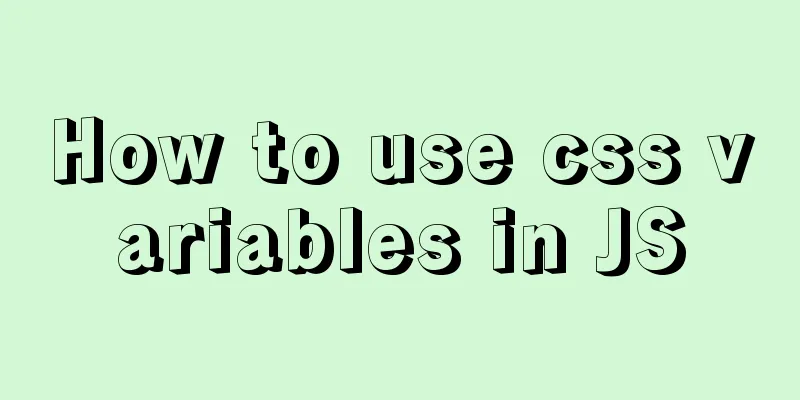Nodejs global variables and global objects knowledge points and usage details

1. Global ObjectAll modules can be called 1) global: represents the global environment where the Node is located, similar to the window object in the browser. 2) process: points to Node's built-in process module, allowing developers to interact with the current process. For example, if you directly enter node in DOS or terminal window, you will enter the NODE command line mode (REPL environment). To exit, enter process.exit(); 3) console: refers to the built-in console module of Node, which provides standard input and standard output functions in the command line environment. Usually write console.log(), no need to say more 2. Global functions 1) Timer functions: There are 4 timer functions: setTimeout(), clearTimeout(), setInterval(), clearInterval(). 3. Global variables1) _filename: points to the name of the script currently running. 2) _dirname: points to the directory where the currently running script is located. 4. Quasi-global variablesThe local variables inside the module point to different objects depending on the module, but they are applicable to all modules and can be regarded as pseudo-global variables, mainly module, module.exports, exports, etc. The module variable refers to the current module. The module.exports variable represents the interface exported by the current module. When other files load the module, they actually read the module.exports variable.
It is important to point out here that the exports variable is actually a link to the module.exports object, which is equivalent to having a line of commands like this in the header of each module.
The result is that when exporting a module interface, you can add methods to the exports object, but you cannot directly point the exports variable to a function:
The above is invalid because it severs the link between exports and module.exports. However, it is possible to write the following. Knowledge point expansion: There is a special object in JavaScript called the global object. In browser JS, this global object is usually the Window object In NodeJS, the name of this global object is global. In NodeJS, there are three ways to define global variables: 1> Variables defined at the outermost level. Generally speaking, user code is not at the outermost level. There is only one case where this is possible: in an interpreter shell environment. 2> Define the variable as a property of the global object var global.x; 3>All variables defined implicitly (undefined, directly assigned variables) This is why implicit definitions are not recommended. Such variables defined as global variables will pollute the environment. This is the end of this article about nodejs global variables and global objects knowledge points and detailed usage. For more related nodejs global variables and global objects content, please search 123WORDPRESS.COM's previous articles or continue to browse the following related articles. I hope everyone will support 123WORDPRESS.COM in the future! You may also be interested in:
|
<<: Time zone issues with Django deployed in Docker container
>>: A brief discussion on order reconstruction: MySQL sharding
Recommend
Basic tutorial on using explain statement in MySQL
Table of contents 1. Overview 1. Explain statemen...
Let's talk in depth about the principle and implementation of new in JS
Table of contents definition Constructor bodies a...
Why MySQL does not recommend using subqueries and joins
To do a paginated query: 1. For MySQL, it is not ...
How InnoDB cleverly implements transaction isolation levels
Preface In the previous article Detailed Explanat...
The latest popular script Autojs source code sharing
Today I will share with you a source code contain...
JavaScript drag time drag case detailed explanation
Table of contents DragEvent Interface DataTransfe...
Keep-alive multi-level routing cache problem in Vue
Table of contents 1. Problem Description 2. Cause...
Detailed explanation of MySQL database addition, deletion and modification operations
Inserting Data insert into table name (column nam...
How to compile and install opencv under ubuntu
Easy installation of opencv2: conda install --cha...
How to solve the mysql insert garbled problem
Problem description: When inserting Chinese chara...
Linux hardware configuration command example
Hardware View Commands system # uname -a # View k...
Detailed explanation of the deep and shallow cloning principles of JavaScript arrays and non-array objects
Table of contents What are shallow cloning and de...
Detailed explanation of the problem of failure to synchronize warehouse cache after changing yum source in CentOS8
Cause of the problem: At first, the default yum s...
Reasons for the sudden drop in MySQL performance
Sometimes you may encounter a situation where a S...
Why developers must understand database locks in detail
1.Lock? 1.1 What is a lock? The real meaning of a...









